What to Do With Low Employee Productivity At Your Workplace: Proven Strategies for Improvement

Employee productivity is a hot topic in the business world. Every company wants to know how to get the most out of their employees, but what happens when you have low employee productivity at your workplace?
There are several reasons for decreased productivity, and it’s crucial to nip the problem in the bud before it becomes a bigger issue. In this blog post, we will discuss some proven strategies for improving employee productivity. Keep reading to learn more!
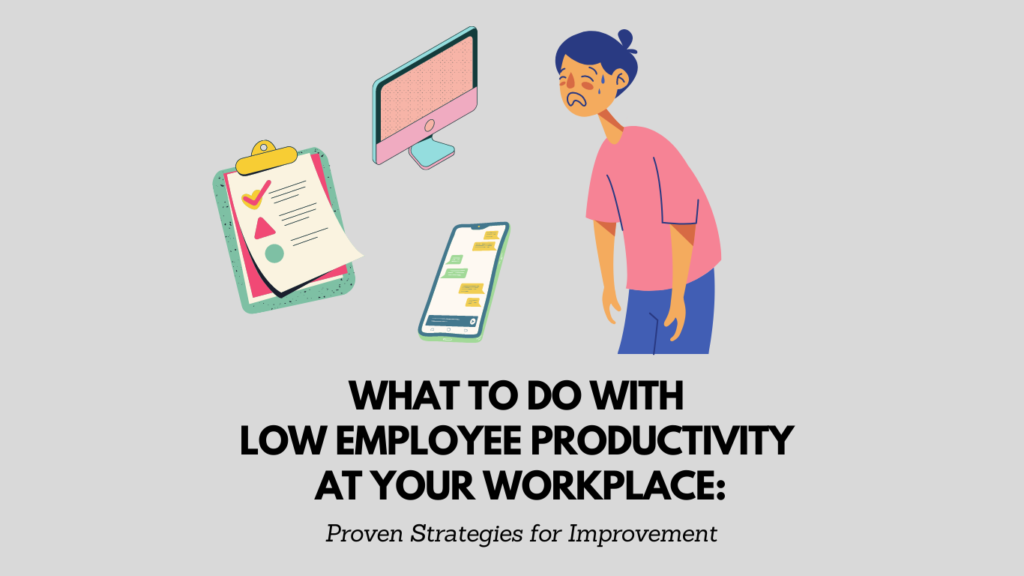
Employee productivity is an essential management topic that has gotten a lot of attention from academics and is seen as a fundamental strategy for improving organizational success.
But, even though productivity is regarded as such, this quality is frequently relegated to second place and disregarded or ignored by those who influence production processes.
If it’s so important why does this happen?
According to Tangen, 2002, in his paper “Understanding the Concept of Productivity”, many managers have a misunderstanding of what productivity actually entails.
In truth, managers constantly discuss productivity, but it is rarely defined, usually misinterpreted and confused with similar terms, and rarely quantified in an acceptable way, resulting in productivity being overlooked or even leading to making counterproductive decisions.
Let’s discuss what productivity really is!
What Is Productivity?
The concept of productivity is generally defined as “the measure of the efficiency of a person, machine, factory, system, etc. in converting inputs into useful outputs.”
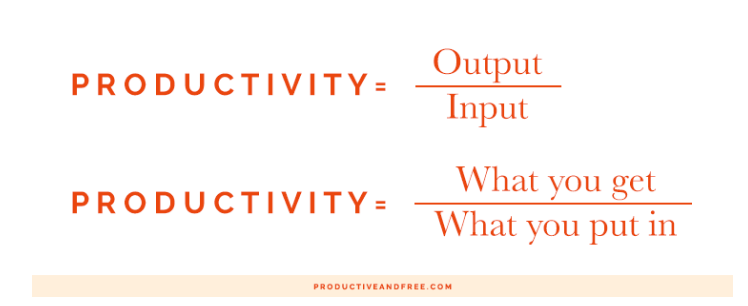
Easy, right? What you get is what you put in! But, can this concept be applied to employee productivity? In a sense, yes.
Employee Productivity
In the workplace, employee productivity is a measure of the amount of work done by employees during the time they spend working. Though it’s not only about tasks fulfilled, but also about quality, time used, and quantity of tasks completed.
In summary, employee productivity in the workplace is about:
- Quantity: the number of products/services produced by an employee in a day
- Quality: the number of products/services produced by an employee that meet or exceed expectations
- Efficiency: the quantity of good products/services produced by an employee within the timeframe specified
In other words, productivity is a measure of how well an employee or organization converts resources – time, labor, and materials – into products or services.
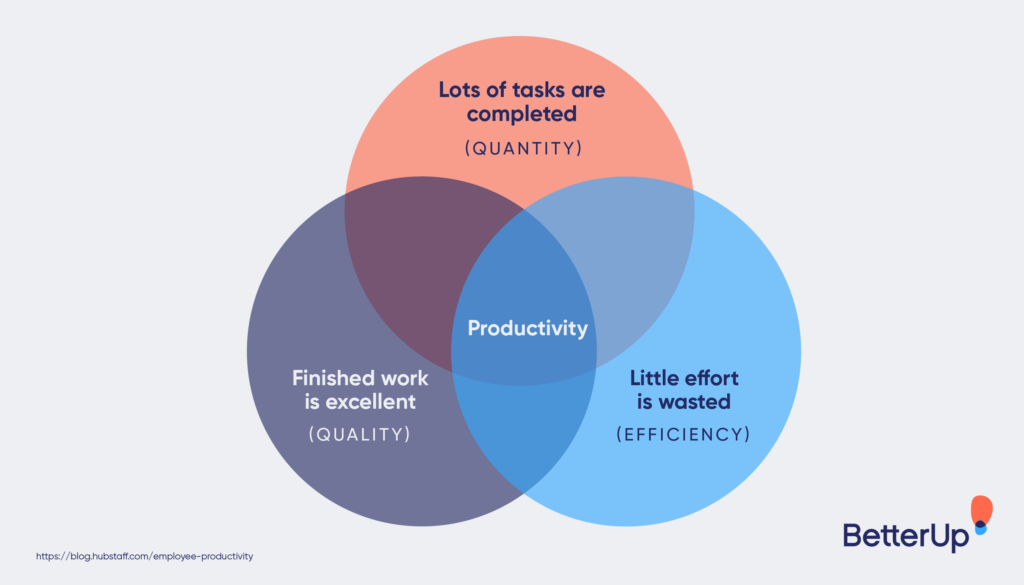
In a practical sense, employee productivity it’s often used as a way to compare how efficient and effective employees are in their roles. So what’s the scale? How do you know your employees are productive?
How To Measure Employee Productivity?
Measuring productivity can be a complex and daunting task. Still, it’s essential to have some sort of metric in place to ensure that your employees are meeting (and hopefully exceeding!) expectations.
There are a few different ways that you can measure employee productivity. Some companies use employee performance reviews, while others track employee output via software programs or time tracking systems.
No matter what method you choose, it’s important to make sure that you’re measuring employee productivity in a way that makes sense for your company and your employees.
Productivity Metrics
When thinking about measuring employee productivity, there are a few different metrics that you’ll want to consider. These include:
Output Per Hour
This metric measures the number of products or services an employee produces in an hour. This is a good way to measure employee productivity if you’re looking at how many items an employee can produce in a given time.
To calculate this, take the number of products or services produced by an employee in a day and divide it by the number of hours worked.
For example, if an employee produces 30 widgets in an eight-hour shift, their output per hour would be 30/80, or .375 widgets per hour.
Management By Objective
This metric is a bit more complex, but it can be helpful if you’re looking for a way to measure employee productivity over time.
The management by objective (MBO) productivity metric involves setting specific goals for employees and then measuring their progress towards those goals. This can be done on an individual basis or for an entire team.
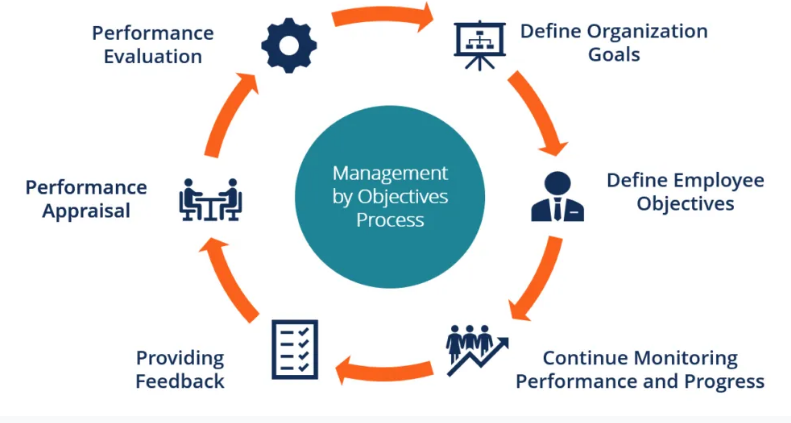
To calculate this metric, you’ll need to set specific goals for your employees and then track their progress towards those. For example, if you want your employee to complete 100 tasks in a week, you would track how many tasks they complete each day and divide that by 100.
If they complete 50 tasks in a week, their MBO productivity would be 50%.
Get more out of your business
Get the best employee engagement content every week via mailing list
Sales Per Employee
If you are in the sales industry, this metric is a good way to measure employee productivity. This metric simply takes the total number of sales made by an employee in a given time and divides it by the number of hours worked.
For example, if an employee makes $500 in sales in a five-hour shift, their sales per hour would be $100.
Number of Customer Complaints
If you are looking for a way to measure employee productivity in the customer service industry, this metric can be helpful.
This metric looks at the number of customer complaints an employee receives in a given time and divides it by the number of hours worked.
For example, if an employee receives five customer complaints in a seven-hour shift, their complaint rate would be .71 complaints per hour.
Employee Retention Rate
As the name suggests, the employee retention rate looks at the number of employees that a company retains in a given time. This metric can be helpful in industries where employee turnover is high.
An effective employee retention strategy can save a company from losing productivity.
To calculate this metric take the number of employees who left the company in a given time and divide it by the total number of employees.
For example, if a company had 50 employees and five of them left in a month, the employee retention rate would be 90%.

As you can see, there are a variety of different metrics you can use to measure employee productivity. The best way to choose a metric is to think about what’s important for your business and your employees.
Once you’ve chosen a metric, make sure to track it over time so you can see how your employees are doing and make changes as needed.
The Value Behind Employee Productivity
The benefits of high employee productivity are often underestimated as productivity doesn’t just mean that a company can get more work done in less time, it also has a direct impact on the company’s bottom line.
Let’s review some of the direct benefits!
- Profitability increase: High levels of productivity increase profitability by allowing a company to get more work done in the same amount of time. This means that a company can increase its output without having to invest in additional resources, which ultimately saves money.
- Optimizes resources: High employee productivity can also help to optimize resources. For example, if you notice that one employee is particularly productive, you can reassign some of their work to other employees who are not as productive. This can help to even out the workload and make sure that all employees are working at their full potential.
- Reduces stress levels: When employee productivity is high, it often leads to reduced stress levels. This is because employees feel like they can get their work done in a timely and efficient manner, which reduces the amount of pressure they feel.
- Improves employee morale: High employee productivity can also improve employee morale. This is because employees feel like they are contributing to the company’s success and they feel appreciated when their work is being noticed.
All these benefits sound great, but what causes low employee productivity in the first place?
Factors That Cause Low Employee Productivity
One of the most common causes of low employee productivity include:
- Poor working conditions: If the working conditions are poor, it can be hard for employees to stay focused and motivated. For example, if the office is too hot or cold, employees might not be able to focus on their work. The same happens if the work environment has toxic behaviors; employees may feel uneasy.
- Unclear expectations: If employees are not given clear expectations, it can be difficult for them to know what is expected of them. As a result, they may start to feel overwhelmed and unsure of how to best use their time.
- Employee wellness: Employee wellness can also lead to low productivity. This is because when employees are not feeling well, they are more likely to take time off work, which can impact the company’s productivity.
- Lack of training: Mediocre training can also lead to low employee productivity. This is because employees who are not properly trained might not know how to use the company’s systems or they might not be aware of the company’s policies.
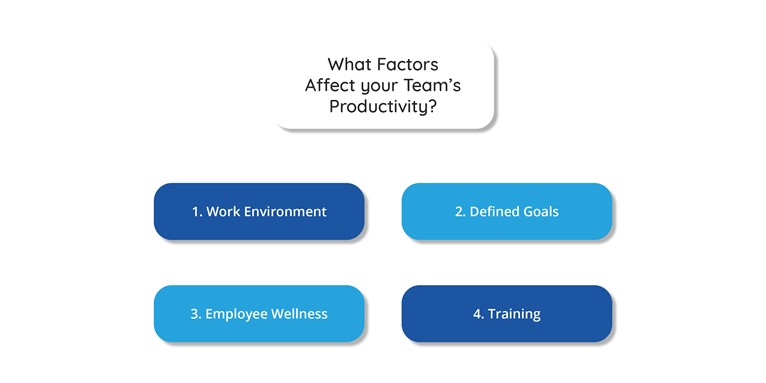
There are many other factors causing low productivity, but we are not here to focus on the problem. Instead, we are offering bulletproof solutions to boost employee productivity at your workplace!
Proven Strategies To Improve Employee Productivity
Before starting, it’s safe to remember that there are many strategies that managers can use to improve employee productivity. Still, it’s important to consider that not all strategies will work for all employees. It’s important to take the time to get to know your team and what motivates them to find the best solution for improving productivity.
Let’s get started!
Set Clear Goals, especially SMART Goals
If you are a manager, the most important thing you can do is set clear goals for your team. This means that you need to be specific, measurable, achievable, relevant, and time-bound when setting these goals. By doing this, you will give your employees a sense of direction and they will know exactly what is expected of them.
To make sure your goals are SMART, you can use the following questions as a guide:
- What do you want to achieve?
- How will you know if you have achieved it?
- What resources are required to achieve the goal?
- Is the goal realistic?
- When do you want to achieve the goal?
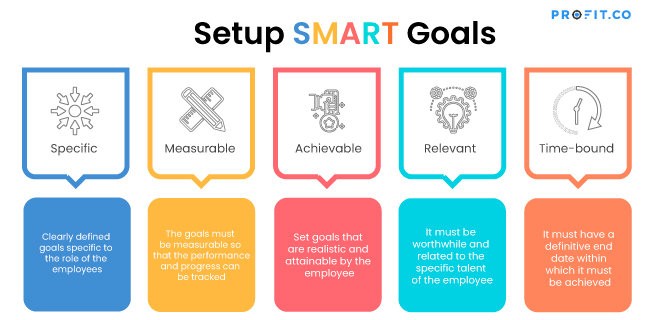
Encouraging Breaks
It might seem counterintuitive, but encouraging employees to take breaks can actually help improve employee productivity. When employees have time to rest and recharge, they’re more likely to be productive when they return to work.
One of the best ways to encourage employee breaks is to review employee workloads regularly. This will help you to identify when employees are starting to feel overwhelmed and it will allow you to redistribute tasks.

Implement a Flexible Work Schedule
There are a few different ways you can implement a flexible work schedule, but it’s important to make sure you are still meeting the needs of your business.
For example, you might allow employees to start and end their days at different times or you might allow employees to take longer breaks during the day.
TIP: According to the Global State of Remote Work by Own Labs in 2018, employees who can work from home at least once a month are 24% happier! Hence, including the option to work remotely can boost employee productivity.
If you’re not sure how to implement a flexible work schedule, see the image below or talk to an HR professional or another management team member for guidance
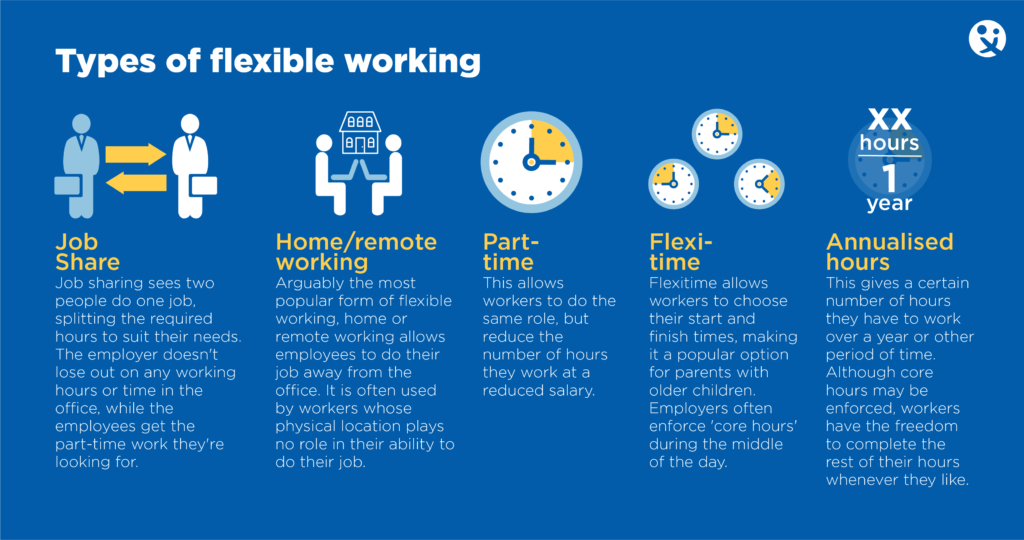
Provide Feedback
To improve employee productivity, you need to provide feedback regularly. This feedback should be both positive and constructive.
When giving positive feedback, it’s important to be specific about what the employee did that you liked. For example: “I appreciate the way you handled that customer complaint.”
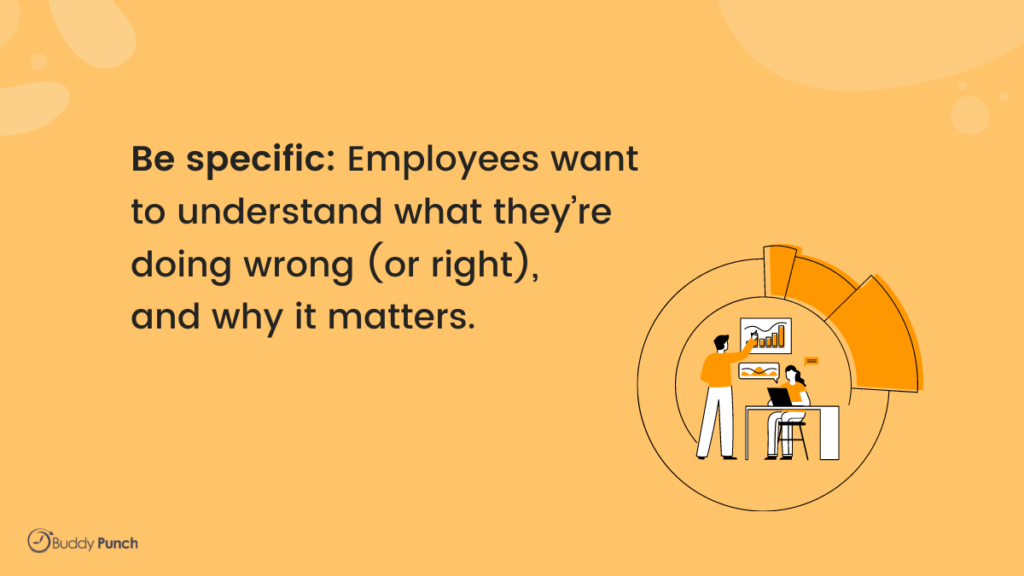
Constructive feedback should also be specific and it should focus on what the employee can do to improve. For example, “I noticed that you didn’t take a break during your shift. In the future, I would like you to take a five-minute break every hour.”
Give Employees The Resources They Need
It’s important to give employees the resources they need to be productive. This includes things like adequate workspace, comfortable furniture, the latest technology, and access to training and development opportunities. If employees don’t have the resources they need, it will be difficult for them to be productive.
Invest in Employee Wellness
Did you know that poor health cost US employers $575 billion in 2019? If your staff is sick, they simply won’t work! Au contraire, when employees are healthy and happy, they’re more likely to be productive. There are some ways you can invest in employee wellness, such as offering health insurance benefits, providing onsite fitness facilities, or offering discounts at local gyms.
Review Employee Productivity Regularly
Last, but not least! A great way to improve employee productivity is to review employee productivity regularly. This will help you identify any areas where employees might be struggling and it will allow you to provide support.
There are a few different ways you can review employee productivity, but one of the most effective methods is to use data from performance reviews.
This data can be used to identify patterns and trends over time, which can help you make changes to improve employee productivity.
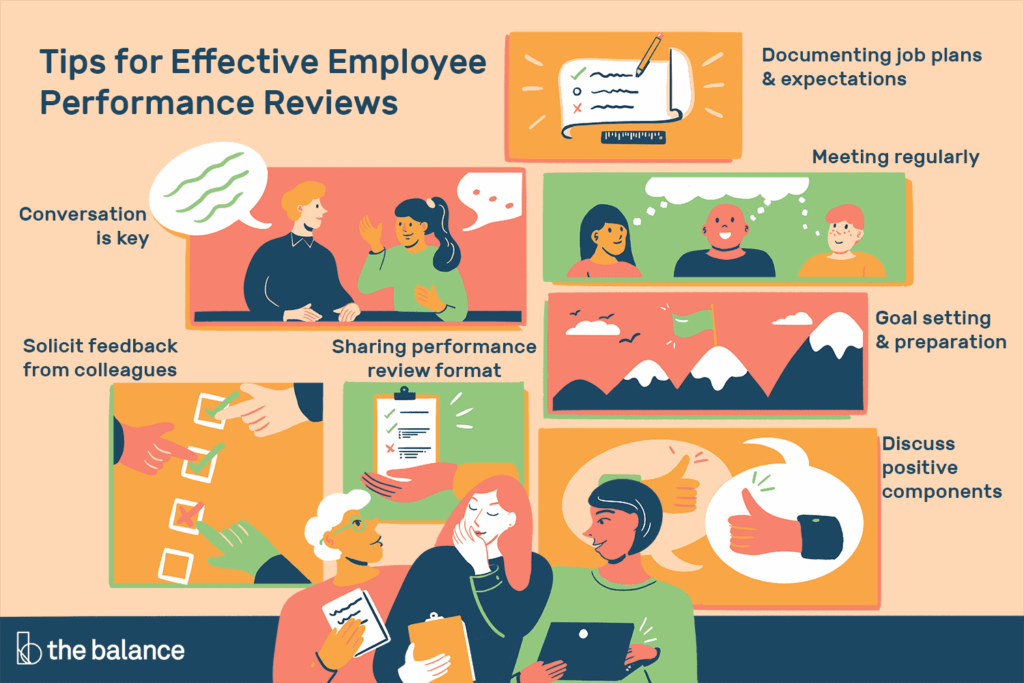
Wrapping Up
There is no doubt that productivity is important for the success of any business. We all know that increasing employee productivity can often feel like a never-ending battle!
If you’re struggling to increase productivity in your workplace, you’re not alone! The good news is that if you follow these strategies you can successfully boost employee productivity. The key is to find the right strategy for your business and your employees!


